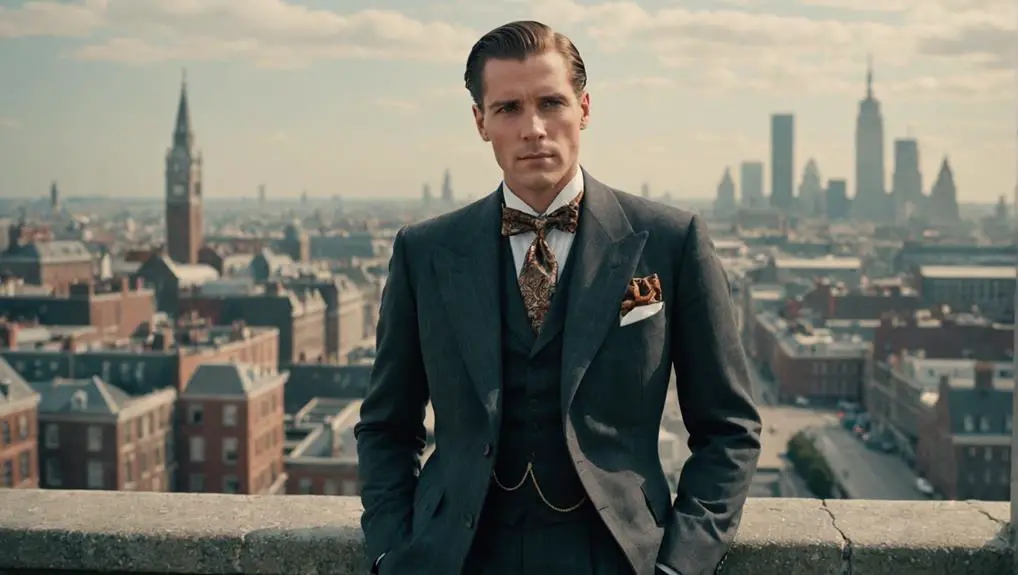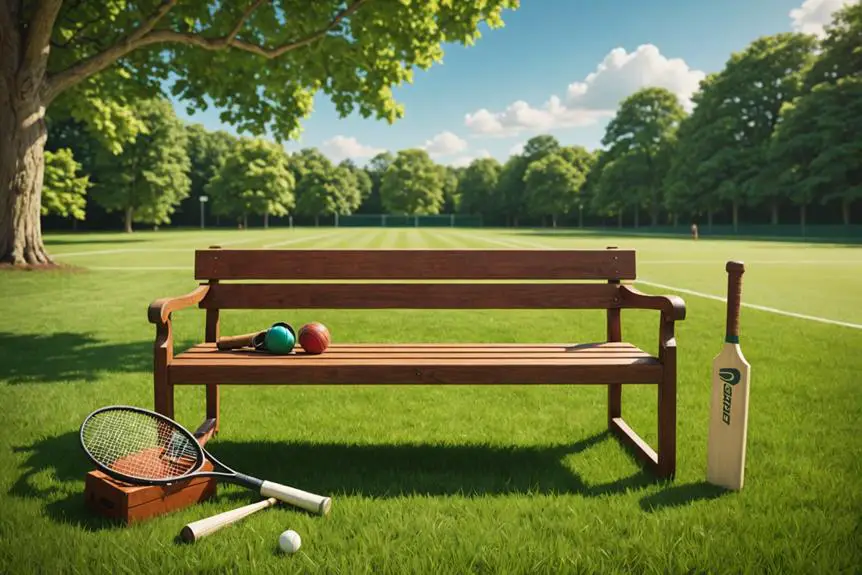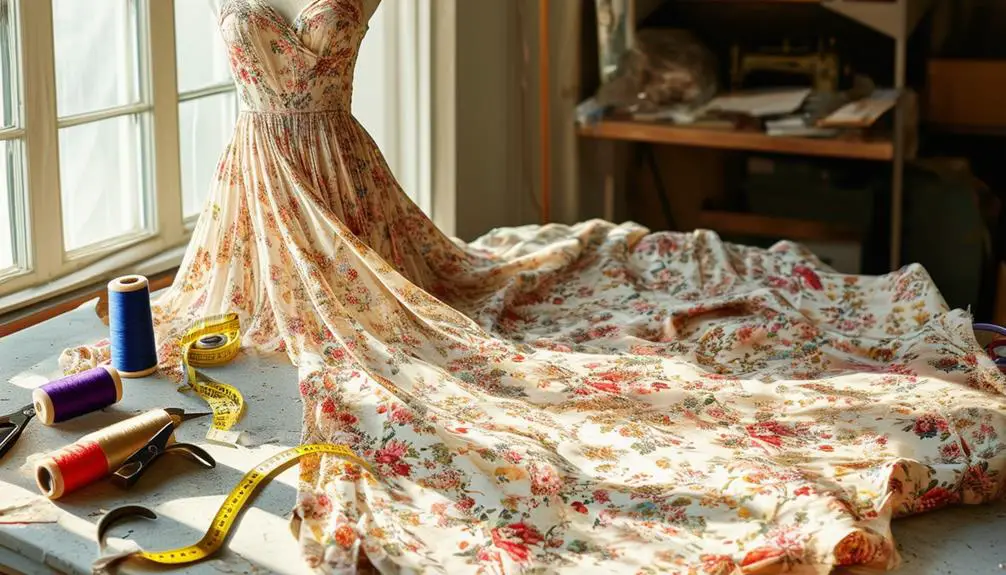In the 1930s, you'd notice men's cravats evolving into vibrant symbols of sophistication and individuality. Fashion shifted from the plain white styles of the past to bold patterns in rayon silk, showcasing paisleys and floral designs. These cravats, often paired with tweed jackets, became essential for both formal and casual settings. Craftsmanship emphasized luxurious materials like silk and satin, enhancing their appeal. Self-tie options flourished, allowing personal expression. Icons of the era, like Cary Grant, popularized their fashionable aesthetic. The cravat's distinct evolution marked it as a key accessory, hinting at the layers of influence it carried.
Historical Context of Cravats

The historical context of cravats reveals their evolution from military origins to a staple of fashionable menswear. Initially worn by Croatian mercenaries, the cravat was introduced to the French court by King Louis XIII in the early 17th century. This shift from military garb to courtly elegance marked the beginning of the cravat's journey into mainstream fashion. By the 1930s, cravats had transformed considerably, moving beyond their traditional white styles to embrace vibrant colors and diverse patterns. This era also saw an increase in the availability of vintage clothing, where unique labels and craftsmanship became desirable traits for collectors.
During this decade, you'd often spot cravats paired with tweed jackets and suits, embodying British sophistication. This versatility made the cravat an essential accessory, suitable for both formal events and casual outings. The materials used—primarily silk and cotton—enhanced their appeal, with silk ties becoming especially popular for their luxurious texture. Intricate designs flourished during this period, featuring geometric patterned motifs and paisleys that allowed men to express their individuality. The cravat consequently not only served a functional purpose but also became a canvas for personal style, firmly establishing itself in the landscape of vintage ties and genuine vintage pieces in 1930s fashion.
Key Styles and Trends
By the 1930s, cravats had firmly established themselves as a fashionable accessory, reflecting the decade's vibrant style evolution. You'd notice a shift from traditional white styles to bold, expressive colors and patterns that showcased individual flair. The advent of rayon silk revolutionized cravat production, allowing for unique prints and textures that appealed to the modern man.
Cravats embraced a variety of designs, featuring paisleys, geometric shapes, and, importantly, Vintage Floral Mens Silk patterns that became symbols of sophisticated style. These cravats often served as statement pieces, complementing both formal and semi-formal attire. Self-tie cravats gained traction, enabling wearers to express their personal style, while pre-tied options catered to those who valued convenience.
The versatility of cravats made them essential accessories, easily paired with suits or tweed jackets for various occasions. As the style progressed into the 1940s, you'd see cravats evolving into more refined Neckties 1940s Necktie styles, but their roots in the 1930s remained evident. The Silk Tie Hand Painted and Tie with Printed Foulard options reflected an enduring commitment to quality and craftsmanship, solidifying the cravat's place in men's fashion history.
Fabrics and Materials Used
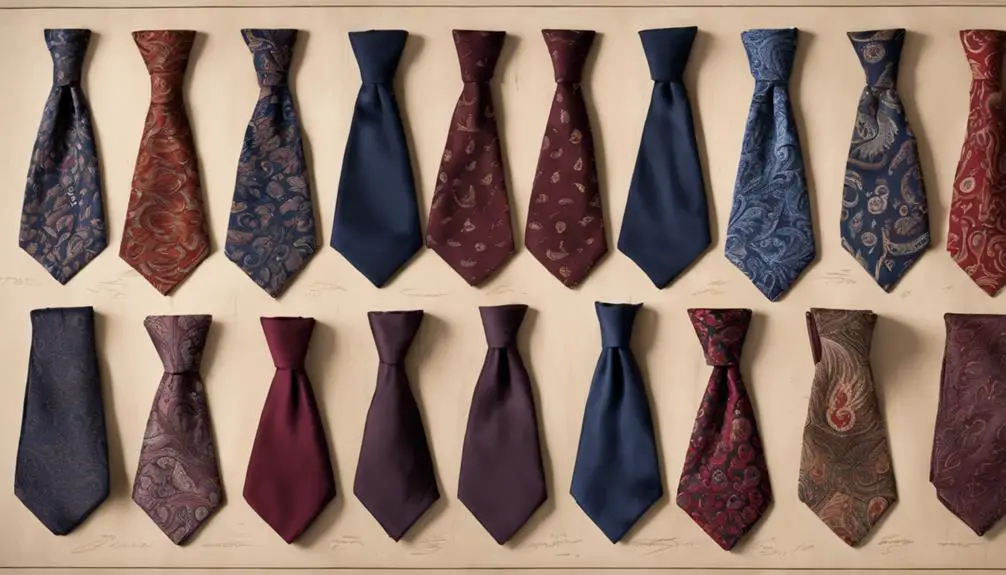
Crafted from an array of luxurious fabrics, cravats in the 1930s showcased a commitment to quality that defined men's fashion during the decade. Silk became the fabric of choice, exuding elegance and sophistication, while satin and cotton offered varied textures and weights. This choice of materials not only enhanced the cravat's aesthetic appeal but also guaranteed comfort, making them a staple in both formal and casual attire.
The decade saw a shift from the traditional white cravat to vibrant, colorful options that allowed men to express their individuality. Vintage styles emerged, featuring intricate motifs and textures, elevating the cravat beyond a mere accessory. Hand-painted designs gained popularity among the fashion-forward crowd, adding a unique touch that appealed to discerning tastes.
Craftsmanship was evident in the detail of each piece, with both untipped and lined varieties available, catering to collectors and enthusiasts alike. This emphasis on high-quality fabrics and meticulous design underscored the significance of the cravat as a necktie that not only complemented a suit but also served as a statement of personal style in the dynamic landscape of 1930s men's fashion.
Notable Patterns and Designs
With the vibrant evolution of fabrics in the 1930s, cravats became a canvas for a diverse array of patterns and designs that captured the era's spirit. You'd find cravats adorned with everything from striking paisleys to bold geometric shapes, reflecting the artistic influences of the time. The introduction of colored cravats marked a significant departure from traditional white styles, allowing fashionable men to express their individuality through eye-catching patterns.
Floral designs took center stage, adding a touch of elegance and charm to men's wardrobes. Many cravats featured motifs like flames and abstract prints, showcasing the creativity and craftsmanship of cravat makers who pushed the boundaries of design. Hand-painted cravats emerged as a coveted choice, offering unique artworks that appealed to collectors and fashion enthusiasts alike.
Luxurious materials such as silk and brocade heightened the visual and tactile allure of these accessories, making them not just clothing items but statements of style. In this decade, cravats evolved into an essential element of men's fashion, blending artistry and sophistication in ways that still resonate today.
Tying Techniques and Styles
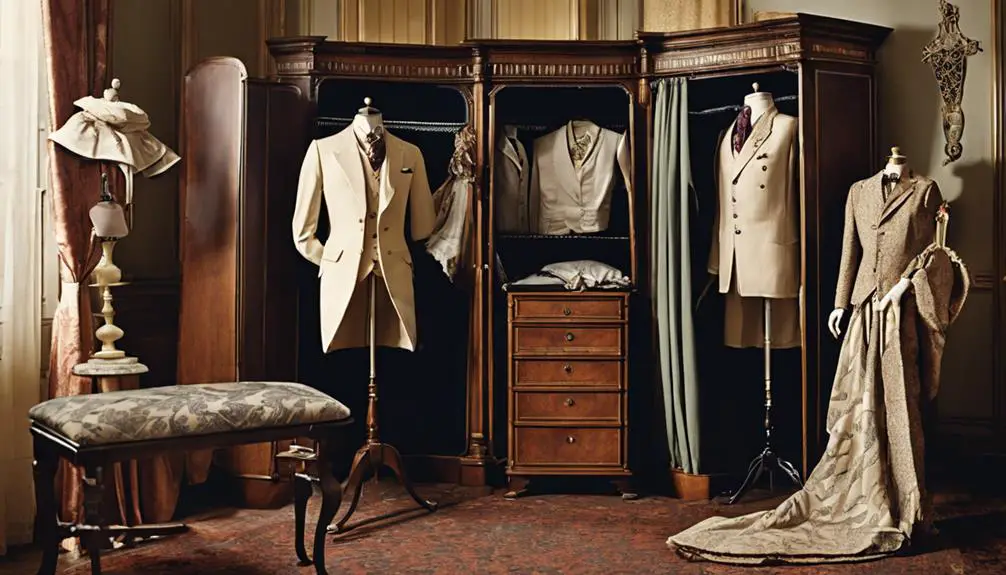
In the 1930s, the art of tying cravats became essential to achieving the era's distinctive style. You'd often find men opting for simple tying techniques that emphasized elegance and comfort. The most popular method involved a loose knot, allowing the cravat to drape softly around the neck. This relaxed yet refined look contrasted starkly with the structured neckties prevalent during the time.
When wearing a cravat, you'd typically let the ends hang down, creating a unique silhouette that set it apart from the more rigid silk ties. Variations in tying styles also emerged, including the convenient Bow Cravat, which was pre-tied for effortless sophistication. This option catered to those who preferred a polished appearance without the need for advanced tying skills.
The choice of fabric played an important role in the overall style of the cravat. With luxurious materials like silk and brocade, these vintage accessories not only enhanced your outfit but also reflected your attention to detail. The interplay of tying techniques and fabric choices made the cravat a versatile staple in men's fashion during the 1930s, embodying an effortless charm that remains admired today.
Influence of Popular Culture
Cravats became a hallmark of men's fashion in the 1930s, largely driven by the influence of popular culture. As Hollywood emerged as a cultural force, film stars showcased elegant styles that captivated audiences. Iconic figures like Clark Gable and Cary Grant wore cravats, elevating them to symbols of sophistication and refinement. You couldn't help but notice how their presence on screen inspired men to adopt similar looks, often incorporating a floral mens silk tie or a vintage Jack Henry tie into their outfits.
The dandy fashion movement embraced flamboyant cravats, reflecting a cultural shift towards individual expression. Bold patterns and vibrant colors became the norm, inviting men to make statements through their neckwear. The rise of swing music and dance clubs further influenced this trend, with cravats complementing tailored suits worn at social gatherings.
As you navigated through the decade, you'd see how the cravat became more than just an accessory; it was a means of self-expression, a way to stand out. Men's silk tie hand craftsmanship flourished, allowing for unique designs that resonated with the evolving fashion landscape, ensuring the cravat remained a timeless staple.
Cravats in Formal Attire
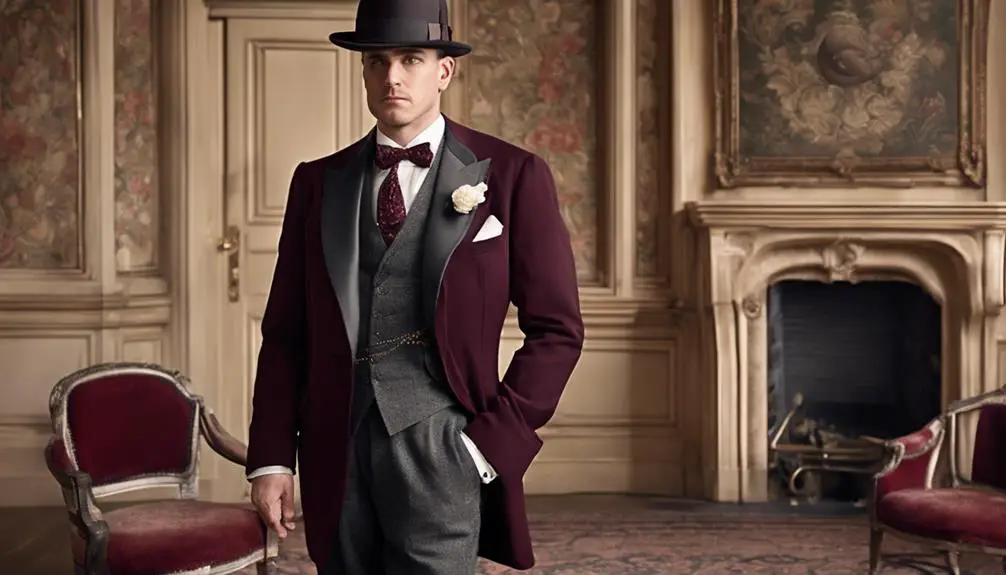
Men's formal attire in the 1930s often featured cravats as a key accessory, seamlessly blending style and sophistication. These elegant neck ties were integral to tailored suits and evening wear, enhancing the overall aesthetic. Rich fabrics like silk and satin dominated the cravat scene, with intricate patterns that reflected the Art Deco style of the time.
You'd find cravats tied in various knots, with self-tie versions becoming particularly popular. This trend allowed you to express your personal style while still adhering to the formal dress codes of the era. Bold colors and striking motifs made cravats a focal point during formal events, drawing attention to the wearer's refined taste.
As a symbol of elegance and refinement, the cravat elevated your ensemble, often signaling high social status. It wasn't just a piece of fabric; it was a statement. When you donned a cravat, you were making a conscious choice to embrace sophistication, setting yourself apart in a world where appearance mattered greatly. In this way, cravats served not only as accessories but as essential elements of men's fashion in the 1930s, particularly in formal settings.
Collecting Vintage Cravats
For fashion enthusiasts and collectors alike, the allure of vintage cravats from the 1930s lies in their unique designs and exceptional craftsmanship. These cravats often showcase intricate motifs like paisleys and geometric patterns, vibrant colors that draw the eye, and luxurious materials such as silk and satin. If you're diving into this collection, keep an eye out for notable brands like Wembley and Mattei Bros, as their pieces tend to command higher prices due to their reputation and quality.
Prices for these collectibles can range from $15 to over $100, influenced by factors like rarity and condition. Cravats in good to new vintage deadstock condition are particularly sought after, as they maintain their original appeal and quality. Hand-painted designs are especially desirable, often fetching premium prices in the market. You might also come across items labeled as Mens Vintage Jack or VTG Mens Silk Tie, which can add distinction to your collection. Each silk necktie mens vintage piece tells a story of its era, making it not just a fashion accessory but a historical artifact worth cherishing. Collecting these cravats can enrich your wardrobe and serve as an investment in timeless style.
Legacy of 1930s Cravats
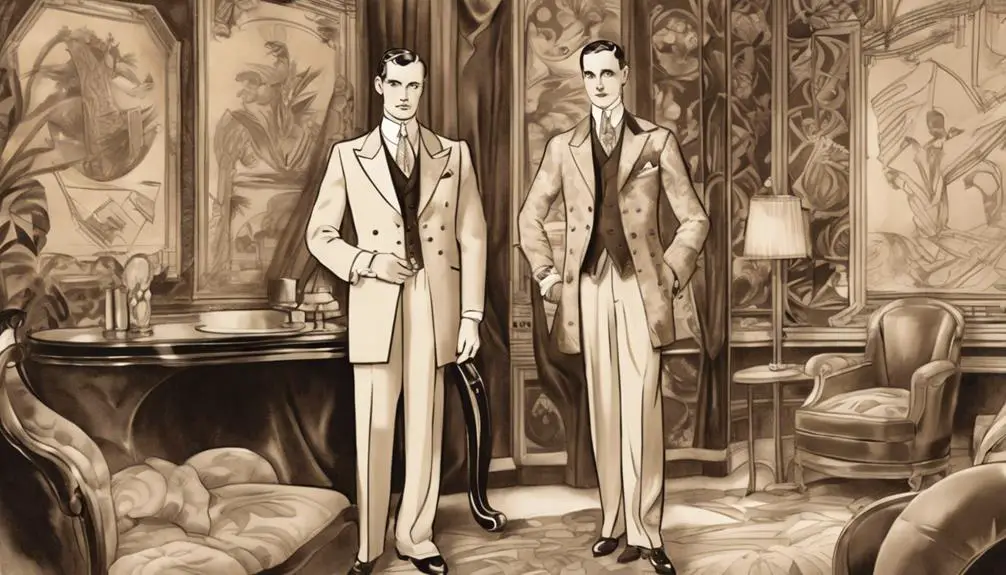
Amid the vibrant tapestry of 1930s fashion, the cravat emerged as a defining accessory that transcended mere utility, embodying a blend of artistry and sophistication. This era's cravats, often crafted from luxurious silk and satin, featured intricate patterns and colors inspired by the Art Deco movement. You'll notice that the change from traditional white cravats to more colorful designs allowed men to express individuality and style.
The legacy of these cravats is evident today, as their influence can be seen in modern neckwear and ties. The self-tie and pre-tied options that gained popularity in the 1930s laid the groundwork for the diverse range of menswear accessories we have now, including the classic silk tie Fargo.
| Feature | Description |
|---|---|
| Material | Silk and satin |
| Patterns | Intricate, vibrant, Art Deco |
| Usage | Social events, everyday attire |
| Evolution | Shift to colorful designs |
| Modern Influence | Foundation for contemporary ties |
Frequently Asked Questions
When Did Men Start Wearing Cravats?
Men started wearing cravats in the 17th century, influenced by Croatian mercenaries. These elegant accessories quickly became symbols of sophistication in European courts, evolving through the centuries into diverse styles and colors for various occasions.
What Kind of Ties Did Men Wear in the 1930s?
In the 1930s, you'd find men sporting ties that exuded elegance, often made from luxurious fabrics. Patterns varied widely, featuring bold designs, reflecting the era's sophisticated style, perfect for both casual and formal occasions.
Were Cravats Worn in the 1920s?
Yes, cravats were definitely worn in the 1920s. You'd see men sporting them with suits, adding a touch of elegance. Their vibrant colors and patterns reflected the era's shift towards more expressive fashion choices.
Did Men Wear Cravats in the 1950s?
In the 1950s, men did wear cravats, albeit less frequently. You'd find them in formal settings or among those embracing vintage styles, often crafted from silk or satin with bold patterns, adding flair to outfits.
